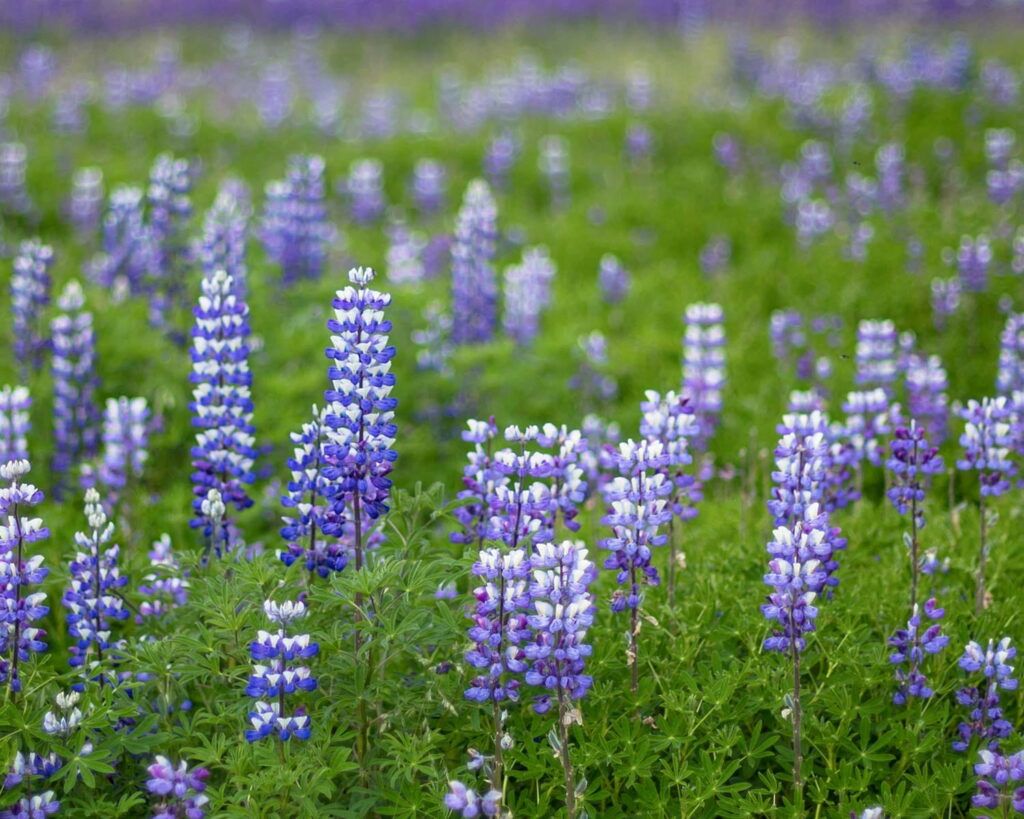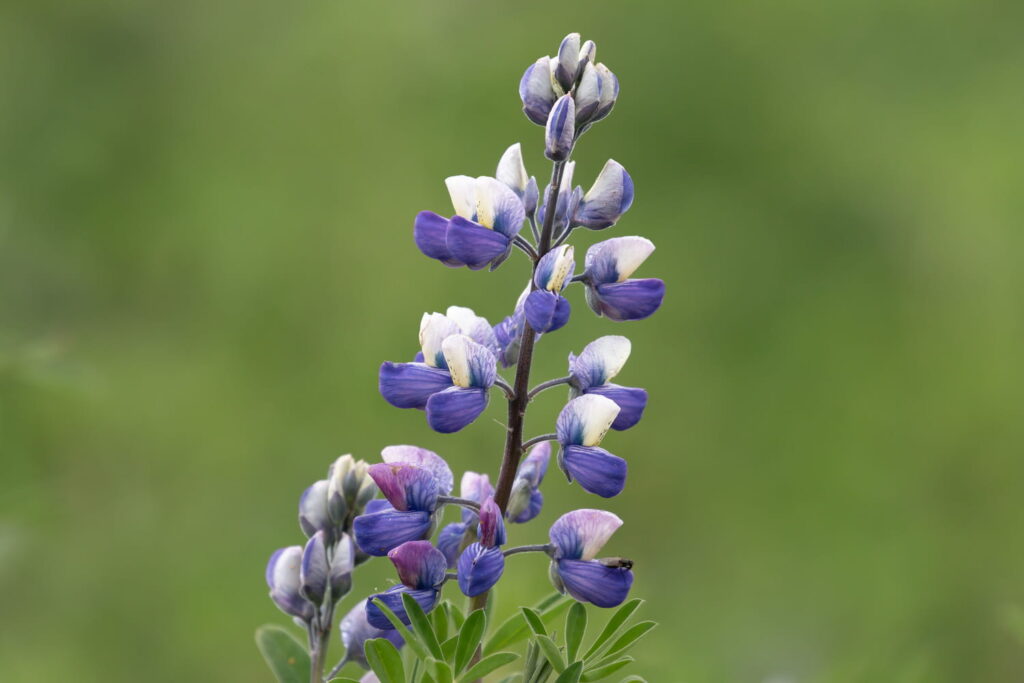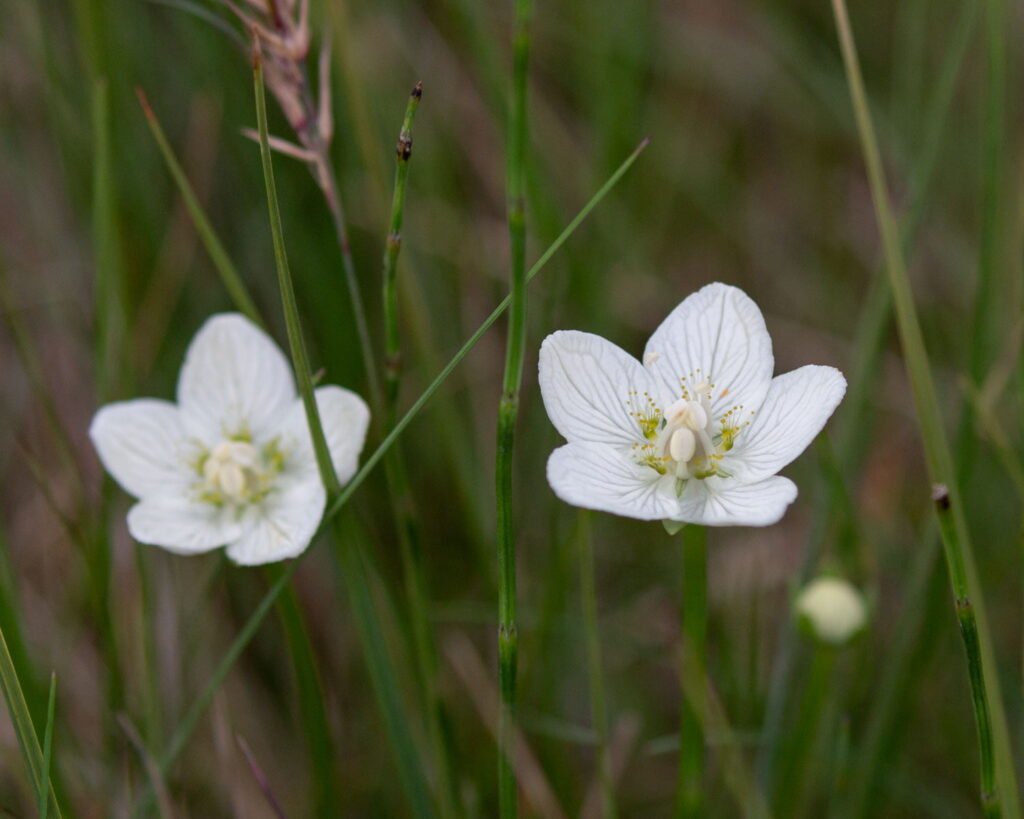A guide to common wildflowers of Iceland
The wildflowers of Iceland are often overlooked for the more obvious natural wonders. However, the wildflowers that cover the landscape in the summer months in Iceland are unique and always beautiful. Even in the most rugged landscape, flowers and plants will make themselves at home.

The country is under the influence of both the arid and barren Arctic region in the north and the more rain-prone Atlantic influences in the south.
This variation in the environment leads to some plants only being found in the far north of the country while others are more common in the south.
WILDFLOWERS IN ICELAND
This short guide will introduce ten of my favourite wildflowers in Iceland and where to look out for them. Whilst there are over 400 species in the country some are harder to find than others. The plants chosen here are the ones that I keep on finding across Iceland and need little effort to discover and enjoy.
Others like the national flower of Iceland, the Mountain Avens and the easily missed Northern Green Orchid are special finds that are there but hidden from view.

Purple flowers in Iceland – Alaskan Lupine (Lúpína)
I feel I should start with lupine and its impact on the landscape. Many visitors are keen to see the purple flowers in Iceland that form huge swathes across the country. In Icelandic, they are known as Lúpína or Úlfabaunir, which means ‘Wolf Beans’.

Why are there lupins in Iceland
These purple lupine or Nootka lupine (Lupinus nootkatensis) are, however, an invasive species introduced in 1945 to revegetate the barren landscape. The seeds were introduced to the southwest lowlands with a plan to add nitrogen to the soil and improve the conditions.
The plan worked beyond the intentions of the committee and the species is now taking over to the detriment of the native plants.
They are now spreading into the Highland regions and whilst they covered approximately 0.4% of the country in 2018, that coverage will continue to increase year on year.

The purple lupin will grow to approximately 120cm in height with spikes of blooms is shades of purple, pink and blue. The flowers start to bloom in June and will last into late July and possibly August, although by this time many of the large fields of lupine will have gone over.
The plants can be seen almost everywhere in the south and west of Iceland when driving around but some of the most impressive fields are along the south coast.
Víkurkirkja, the church above Vík í Mýrdal is surrounded by lupine as is the end of the peninsula by Vestrahorn Mountain out towards Stokksnes Lighthouse.
To the west on the Snæfellsnes Peninsula, there are vast swathes of lupine around Ingjaldshóll Church between Hellissandur and Rif.
Harebells (Bláklukka)
Harebells (Campanula rotundifolia) prefer dry poor soil and are found along the roadside and paths across the south and east of Iceland. They are probably most common in the east of Iceland where they cling to the rocky soil.
One of the best landscapes to see them is around Lómagnúpur with the unique and rugged cliff face providing the perfect backdrop.
They have a thin narrow stem covered in small hairs and very narrow leaves. The flowers are bell-shaped with five triangular petals that bloom in July and August.

Forget-me-Nots (Gleym-mér-ei)
Forget-me-nots (Myosotis arvensis) or scorpion grasses are seen all over Iceland with their delicate blue flowers that fill the roadside. There are seen in the south and east mainly and prefer the more urban habitats.
They have tiny 4-5mm flowers with five sepals and petals and hairy stems and leaves. These flowers appear soon after the winter snow melts in spring and continue to flower through the summer.

CottonGrass (Klófífa)
Cotton grass (Eriophorum) is a sedge that is found in marshes and bogs across Iceland. It also likes the ditches along the sides of the roads and small ponds and lakes as well as wet sand. Its white flowers form a moving sea of fluff.
It flowers all year but is at its best from June to October. The best displays of this flower can be seen in the Westfjords and the wetlands around Landmannalaugar where the mountains make a stunning backdrop to fields of blooms.
The Scheuchzer’s cottongrass (Eriophorum scheuchzeri) has a single flower on each stem surrounded by a silvery-white, hairy mass of tufts. If the stem has multiple flower spikes then it is common cottongrass (Eriophorum angustifolium).

Meadow Buttercup (Brennisóley)
The meadow buttercup (Ranunculus acris) is found across Iceland and prefers dry meadows and the fringes of the highlands. The most common areas to find them are around the Snæfellsnes Peninsula and in the northeast of the country. They flower from May to July.

The flower buds develop in late summer the year before flowering with the harsh cold of winter promoting the development of the flowers the following summer. The plants can grow to 70cm and can look quite stringy and wild. The flowers have five glossy yellow petals that form a delicate shape. As the flower matures the petals will open out to become flat.
Grass-of-Parnassus (Mýrasóley)
This small flower goes under a variety of names including bog star and Grass-of-Parnassus (Parnassia palustris). Despite its name, it is not a grass but it does prefer wet moorlands and marshes. It is found across Iceland apart from the desert regions of the Highlands.
The plant has star-shaped cream flowers with heart-shaped petals that have dark veins and a honey-like scent. Each stem has a single flower that blooms between July and October.

Moss Campion (Lambagras)
Moss Campion (Silene Acaulis) is known as Lambagras in Icelandic, translating to ‘Lamb Grass.’ It prefers dry arid environments and it is seen in the Highlands and the Westfjords.
They are also seen commonly on the lava fields close to Víti crater where the lava fields from Krafla provide the habitat they thrive in and an unusual landscape as a background to the plants.

They bloom in the early summer soon after the snow melts and are best seen in May and June and this is the best time to photograph them. As the season progresses the number of flowers decreases.
The moss campion grows in small bushes that are dense with the flowers appearing over the surface. The leaves are bright green with single star-shaped pink flowers. The petals each have a cream band close to the centre of the flower. These small plants are either male or female and can change the gender of the flowers produced between years.
Angelica (Ætihvönn)
Angelica (Angelica Archangelica) is one of the longest surviving plants in Iceland and references to it have been found in the Icelandic Saga’s dating back over 1000 years. It is found across the country preferring wet environments where it grows up to 2 metres high.
The flowers are large spherical structures and appear green at first before turning white. They are best during the autumn months from September to November. After flowering the leaves die back leaving just the woody structure of the flowers that are often seen standing proud above the snow in winter.

Angelica is so common in Iceland that a number of places have been named after it including Hvannadalshnjúkur, the highest peak in Vatnajökull National Park which translates to Angelica Valley Peak. In west Iceland, the gorge Hvanngil also takes its name from the herb.
Arctic Riverbeauty (Eyrarrós)
Arctic Riverbeauty (Chamerion latifolium) is a member of the Willowherb family and is found along river banks and the sides of the road across Iceland but is more obvious in the Highlands.
One of the best places to see Arctic Riverbeauty is along F905 and F910 towards Dreki and Askja. However, care should be taken to drive this road and should only be done with a suitable vehicle.

It has large pink flowers with four large petals that have deeper pink veins and a further four, narrow dark pink petals forming a star appearance. These can be seen in June and July. As the summer fades the long narrow fruits grow under the flower and can be seen in autumn once the flower petals have dropped.
Wood Cranesbill (Blágresi)
Wood cranesbill (Geranium sylvaticum) is found across Iceland and prefers shaded areas. This includes the sheltered damp areas at the base of waterfalls and in the small birch woodlands.
My favourite place to discover wood cranesbill is in the woodlands surrounding the lake at Ásbyrgi. Here the canopy cover and the damp ground from the lake provide the ideal habitat for these plants to thrive.
The flowers have five deep purple petals and a white centre. Each petal has pink veins. The flower through the summer from July to September.

Common wildflowers to find in Iceland
- Alaskan lupine
- Harebells
- Forget-me-nots
- Cottongrass
- Meadow buttercups
- Grass-of-Parnassus
- Moss Campion
- Angelica
- Arctic Riverbeauty
- Wood Cranesbill
Planning a road trip to Iceland? Read all my Iceland Travel Guides